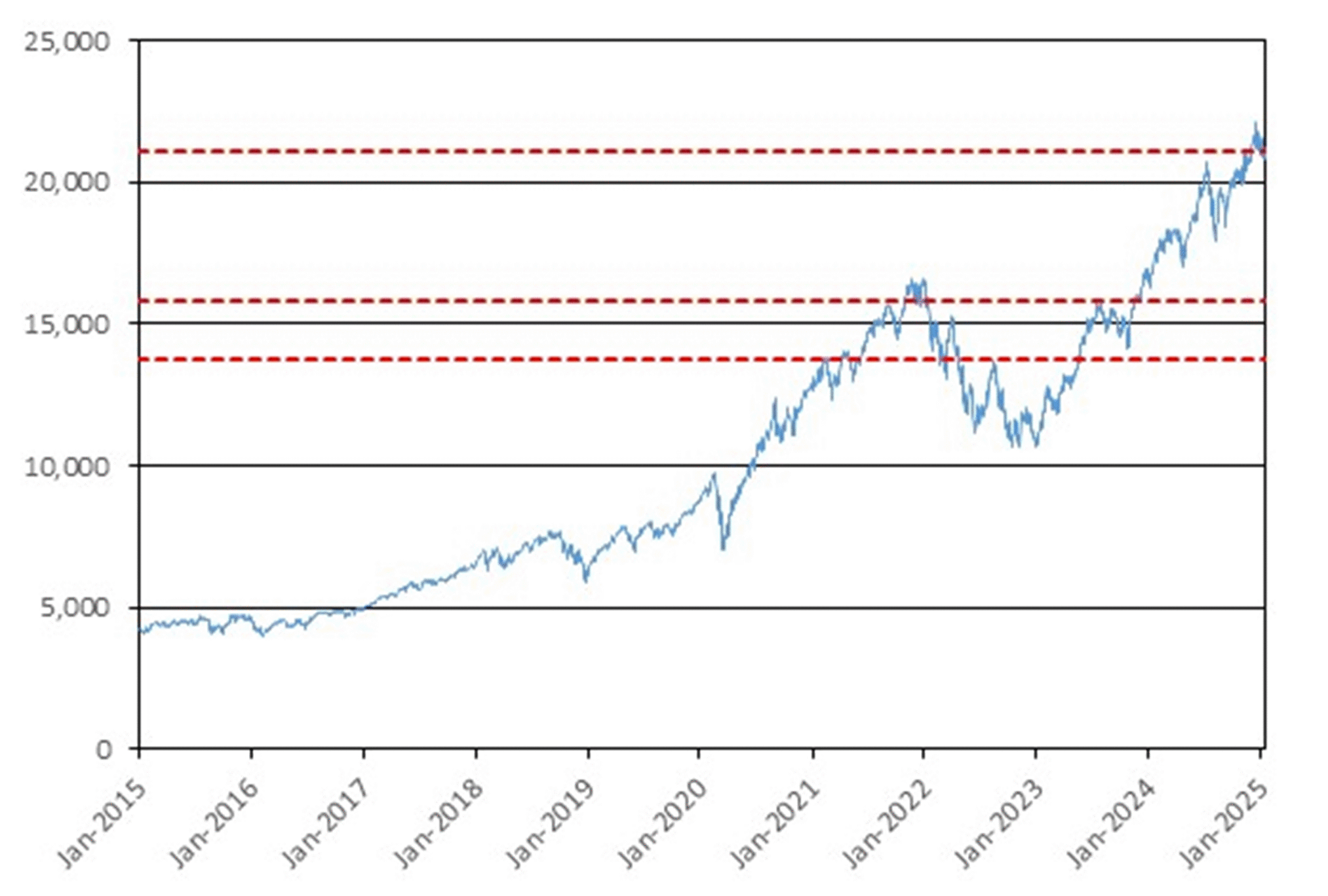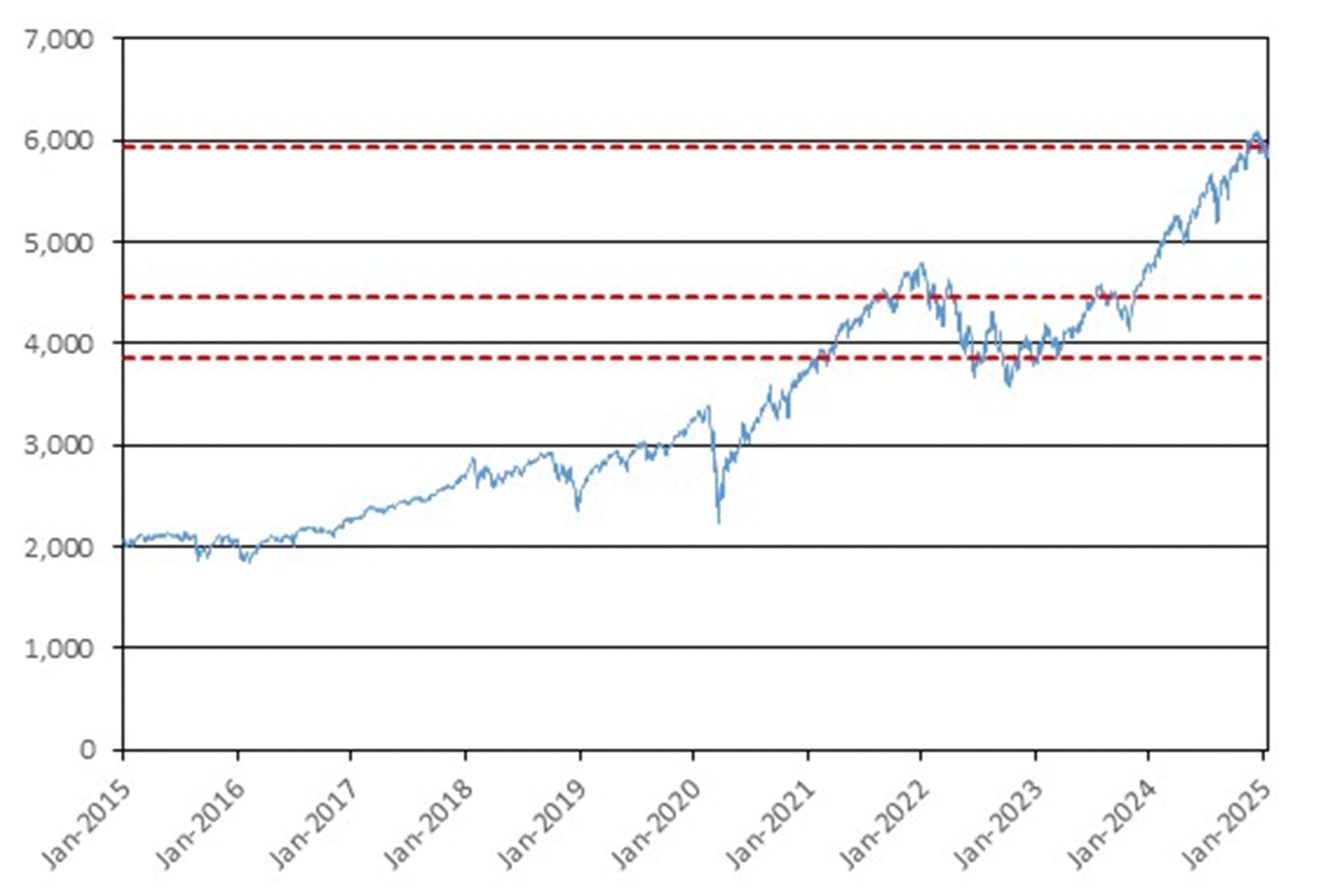♦The estimated initial value is a theoretical price; the actual price at which you may be able to sell your Notes in any secondary market (if any) at any time after the trade date may differ from the estimated initial value — The value of your Notes at any time will vary based on many factors, including the factors described above and in “— Risks Relating to Characteristics of the Underlying Assets — Market risk” above and is impossible to predict. Furthermore, the pricing models that we use are proprietary and rely in part on certain assumptions about future events, which may prove to be incorrect. As a result, after the trade date, if you attempt to sell the Notes in the secondary market, the actual value you would receive may differ, perhaps materially, from the estimated initial value of the Notes determined by reference to our internal pricing models. The estimated initial value of the Notes does not represent a minimum or maximum price at which we or any of our affiliates would be willing to purchase your Notes in any secondary market at any time.
♦Our actual profits may be greater or less than the differential between the estimated initial value and the issue price of the Notes as of the trade date — We may determine the economic terms of the Notes, as well as hedge our obligations, at least in part, prior to the trade date. In addition, there may be ongoing costs to us to maintain and/or adjust any hedges and such hedges are often imperfect. Therefore, our actual profits (or potentially, losses) in issuing the Notes cannot be determined as of the trade date and any such differential between the estimated initial value and the issue price of the Notes as of the trade date does not reflect our actual profits. Ultimately, our actual profits will be known only at the maturity of the Notes.
Risks Relating to Liquidity and Secondary Market Price Considerations
♦There may be little or no secondary market for the Notes — The Notes will not be listed or displayed on any securities exchange or any electronic communications network. There can be no assurance that a secondary market for the Notes will develop. UBS Securities LLC and its affiliates intend, but are not required, to make a market in the Notes and may stop making a market at any time. If you are able to sell your Notes prior to maturity you may have to sell them at a substantial loss. The estimated initial value of the Notes does not represent a minimum or maximum price at which we or any of our affiliates would be willing to purchase your Notes in any secondary market at any time.
♦The price at which UBS Securities LLC and its affiliates may offer to buy the Notes in the secondary market (if any) may be greater than UBS’ valuation of the Notes at that time, greater than any other secondary market prices provided by unaffiliated dealers (if any) and, depending on your broker, greater than the valuation provided on your customer account statements — For a limited period of time following the issuance of the Notes, UBS Securities LLC or its affiliates may offer to buy or sell such Notes at a price that exceeds (i) our valuation of the Notes at that time based on our internal pricing models, (ii) any secondary market prices provided by unaffiliated dealers (if any) and (iii) depending on your broker, the valuation provided on customer account statements. The price that UBS Securities LLC may initially offer to buy such Notes following issuance will exceed the valuations indicated by our internal pricing models due to the inclusion for a limited period of time of the aggregate value of the underwriting discount, hedging costs, issuance costs and theoretical projected trading profit. The portion of such amounts included in our price will decline to zero on a straight line basis over a period ending no later than the date specified under “Supplemental Plan of Distribution (Conflicts of Interest); Secondary Markets (if any).” Thereafter, if UBS Securities LLC or an affiliate makes secondary markets in the Notes, it will do so at prices that reflect our estimated value determined by reference to our internal pricing models at that time. The temporary positive differential relative to our internal pricing models arises from requests from and arrangements made by UBS Securities LLC with the selling agents of structured debt securities such as the Notes. As described above, UBS Securities LLC and its affiliates intend, but are not required, to make a market for the Notes and may stop making a market at any time. The price at which UBS Securities LLC or an affiliate may make secondary markets at any time (if at all) will also reflect its then current bid-ask spread for similar sized trades of structured debt securities. UBS Securities LLC reflects this temporary positive differential on its customer statements. Investors should inquire as to the valuation provided on customer account statements provided by unaffiliated dealers.
♦Economic and market factors affecting the terms and market price of Notes prior to maturity — Because structured notes, including the Notes, can be thought of as having a debt component and a derivative component, factors that influence the values of debt instruments and options and other derivatives will also affect the terms and features of the Notes at issuance and the market price of the Notes prior to maturity. These factors include the levels of the underlying assets and the underlying constituents; the volatility of the underlying assets and the underlying constituents; any expected dividends on the underlying constituents; the correlation of the underlying assets; the time remaining to the maturity of the Notes; interest rates in the markets; geopolitical conditions and economic, financial, political, force majeure and regulatory or judicial events; the creditworthiness of UBS; the then current bid-ask spread for the Notes and the factors discussed under “—Risks Relating to Hedging Activities and Conflicts of Interest — Potential conflicts of interest” below. These and other factors are unpredictable and interrelated and may offset or magnify each other.
♦Impact of fees and the use of internal funding rates rather than secondary market credit spreads on secondary market prices — All other things being equal, the use of the internal funding rates described above under “— Estimated Value Considerations” as well as the inclusion in the issue price of the underwriting compensation, hedging costs, issuance and other costs and any projected profits are, subject to the temporary mitigating effect of UBS Securities LLC’s and its affiliates’ market making premium, expected to reduce the price at which you may be able to sell the Notes in any secondary market.
Risks Relating to Hedging Activities and Conflicts of Interest
♦Potential UBS impact on price — Trading or transactions by UBS or its affiliates in any underlying asset or underlying constituent, as applicable, listed and/or over-the-counter options, futures, exchange-traded funds or other instruments with returns linked to the performance of any underlying asset or underlying constituent, as applicable, may adversely affect the levels of the underlying assets and, therefore, the market value of, and return on, the Notes.
♦Potential conflicts of interest — UBS and its affiliates may engage in business with any underlying constituent issuer, which may present a conflict between the interests of UBS and you, as a holder of the Notes. There are also potential conflicts of interest between you and the calculation agent, which will be an affiliate of UBS. The calculation agent will determine whether the contingent coupon is payable to you on any coupon payment date, whether the Notes are subject to an automatic call and the payment at maturity of the Notes, if any, based on observed closing levels of the underlying assets. The calculation agent can postpone the determination of the terms of the Notes if a market disruption event occurs and is continuing on the trade date, any observation date or the final valuation date. As UBS determines the economic terms of the Notes, including the contingent coupon rate, call threshold levels, downside thresholds and coupon barriers, and such terms include the underwriting compensation, hedging costs, issuance and other costs and projected profits, the Notes represent a package of economic terms. There are other potential conflicts of interest insofar as an investor could potentially get better economic terms if that investor entered into exchange-traded and/or OTC derivatives or other instruments with third parties, assuming that such instruments were available and the investor had the ability to assemble and enter into such instruments. Additionally, UBS and its affiliates act in various capacities with respect to the Notes, including as a principal, agent or dealer in connection with the sale of the Notes. Such affiliates, and any other third-party dealers, will derive compensation from the distribution of the Notes and such compensation may serve as an incentive to sell these Notes instead of other investments. Furthermore, given that UBS Securities LLC and its affiliates temporarily maintain a market making premium, it may have the effect of discouraging UBS Securities LLC and its affiliates from recommending sale of your Notes in the secondary market.
♦Potentially inconsistent research, opinions or recommendations by UBS — UBS and its affiliates publish research from time to time on financial markets and other matters that may influence the value of, and return on, the Notes, or express opinions or provide recommendations that are inconsistent with purchasing or holding the Notes. Any research, opinions or recommendations expressed by UBS or its affiliates may not be consistent with each other and may be modified from time to time without notice. Investors should make their own independent investigation of the merits of investing in the Notes and the underlying assets.







